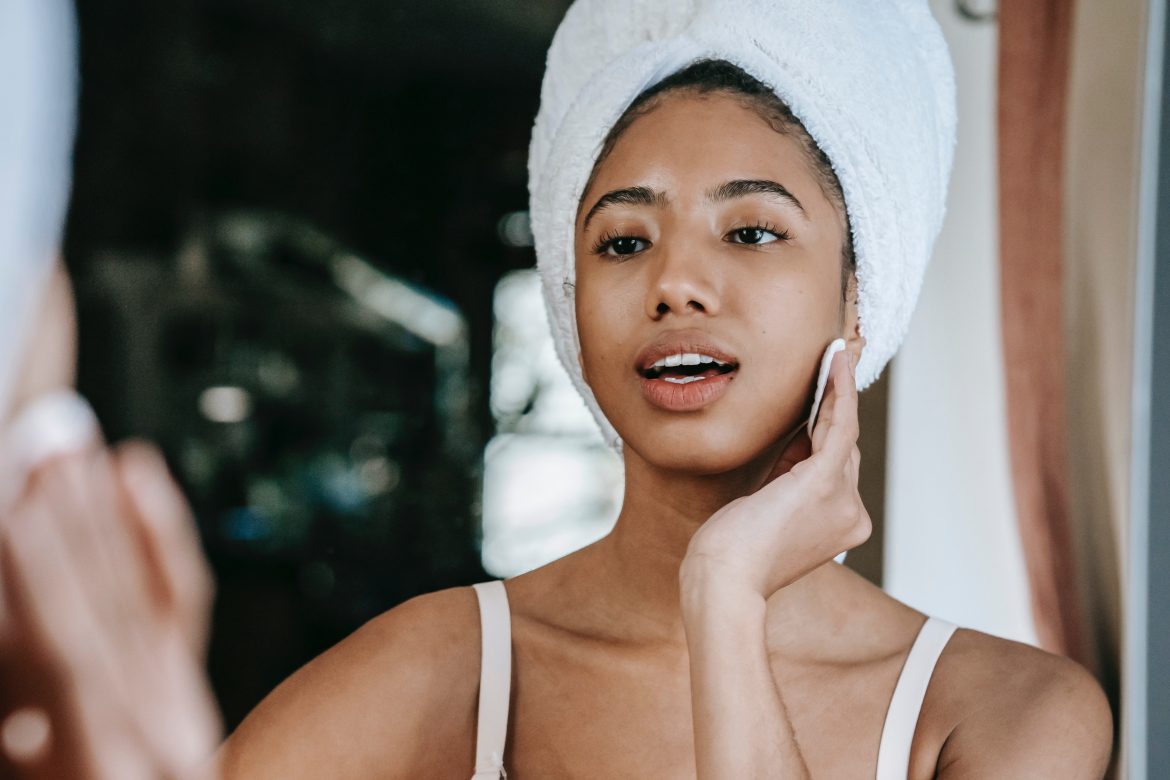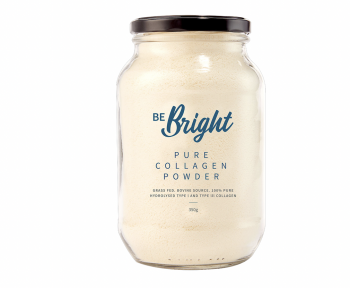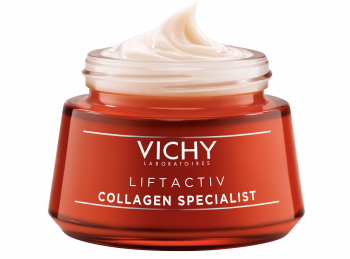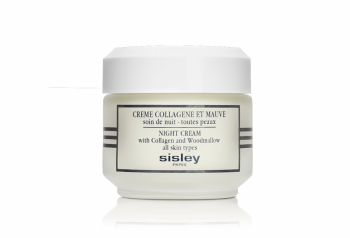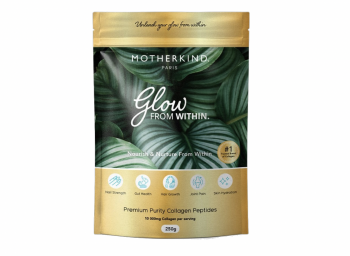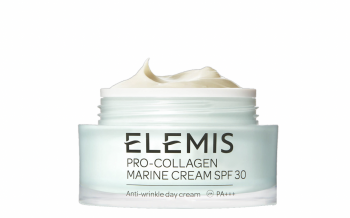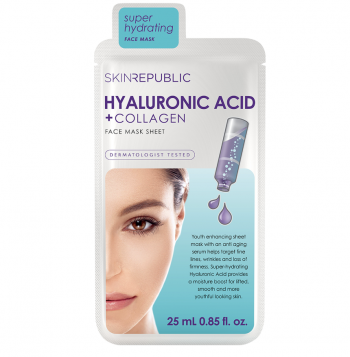Beauty buzzwords come and go, but it’s becoming decidedly harder to differentiate between what’s simply a hype and what actually lives up to its expectations. Take collagen, for example; can it really give us youthful looking skin?
COLLAGEN & AGEING
Hailing from the Greek word kolla, meaning glue, collagen is a protein that provides structure and strength to our bones, muscles and tendons. Think of it as a so-to-speak squishy substance that, apart from keeping the aforementioned elements in check, gives skin plumpness and helps replace and renew dead skin cells. Essentially, this is what keeps us looking and feeling young, but also what keeps our skin healthy. When looking at a deeper level, the dermis is where you’ll find collagen, along with elastic fibres, blood vessels and lymph vessels. The dermis is primarily a connective tissue matrix made up of approximately 90% collagen. Rewind a few layers and you’ll find the outermost layer, the epidermis, which is separated into various layers as the skin develops and matures from the basement membrane to the outer layer – the stratum corneum.
It is this layer that is responsible for the skin barrier – preventing water loss, maintaining hydration and preventing overhydration. It has biosensor activity too, meaning it can sense any disruption of the skin barrier and initiate reparative mechanisms, which result in preventative inflammatory responses. While the dermis and epidermis are connected, some changes that come with age result in a reduction of the contact between the two. One being the flattening of retepegs (think little pillars that extend and project into the connective tissues), and another being the decline of collagen production. The elastic fibres undergo irreversible structural and compositional changes that only progress with age. As intricate as this all may be, it’s a natural part of ageing.
In order to look at and understand collagen a little better, let’s go back for a second. There are currently 29 known different forms of collagen. Type 1 (pro-collagen) is the most abundant and best studied type, and type 3 and 5 make up the rest in a synthesised fibroblast.
✣ TYPE 1 is made up of a tripe helix, containing the types 3 (in skin and reticular fibres) and 5 (in tendons, bone and cornea).
✣ FIBROBLASTS are the biological cells that synthesise the production of collagen and regulate the collagen pathway. How clever!
However, ‘collagen’ can easily be misunderstood and used as a generic term, but the composition is incredibly structural and goes beyond just the skin. Collagens, when describing all 29, are proteins that form a triple helix of three polypeptide chains, which then, as a whole, forms supramolecular structures in the extracellular matrix, all with their respective variations in size, function and tissue distribution. For example, types 1 and 5 contribute to bone structure while types 2 and 11 contribute to articular cartilage. Technicalities aside, collagen is the body’s scaffolding and the most important structural protein in the body. But is replacing what is lost as easy as taking a supplement or smoothing on a serum? Not quite
HYDROLYSED COLLAGEN
Our skin starts to produce less collagen when we reach our 20s, after which it becomes more and more susceptible to loss of firmness and elasticity. With every year, there is another 1% decrease of collagen, which means that all three layers of skin (epidermis, dermis and hypodermis) start to thin out as well. For a long time now, people have been using collagen in various ways to try and slow down this process, but only until recently has the industry been bombarded with ‘miracle cures’ and countless lotions and potions that promise to plump and firm up skin andreplace what has been lost, and then some! The reality? It’s not quite so simple and although it does hold promise, it’s best to know exactly what you’re buying and how it will be utilised. Collagen fillers have fallen out of favour, thanks to the less risky (think allergic reactions) and more effective introduction of hyaluronic fillers and supplements. In supplements, it is an excellent source of protein, has been found to improve joint health and joint healing, and plays a role in arthritic and sport-related pain management.
When it comes to your day-to-day collagen supplement, the buzzword is hydrolysed collagen, a group of peptides with a low molecular weight, extracted from sources such as porcine (pig) and bovine (cow), and recently extracted from marine sources as well. Compared to native collagen, hydrolysed versions are highly digestible, and easily absorbed and distributed in the body.
It acts in two ways in the dermis. First, the free amino acids provide building blocks for the formation of elastin fibres and collagen; and secondly, the collagen oligopeptides act as ligands, binding the receptors on the fibroblasts’ membrane, thereby stimulating the production of new collagen, hyaluronic acid and elastin. In a nutshell, while more studies are needed to prove its ability to supplement lost collagen in the body, it does improve skin’s moisture absorption and retention levels, which makes skin appear more youthful and healthy.
HOW TO REBUILD
Dr Amy Wechsler, author of The Mind-Beauty Connection and NYC Upper East Side dermatologist and psychiatrist, explains ageing simply as the deterioration of protein fibres (collagen and elastin). Those very fibres that keep our skin ‘springy, resilient and vibrant’. As we age, those fibres become damaged and tired, which ultimately leads to wrinkles and sagging.
Now although we don’t see this type of deterioration as early as, say, 21 already, the visible signs will be more prominent around our mid-30s when other ageing factors also come into play. Human agency is important to note as well… There are so many things that we expose our skin to, willingly or not, that contribute to the breakdown of collagen. Take daily sun exposure, high-sugar foods, smoking and stress, to name a few. Incorporating collagen supplements or topical treatments will have benefits to help counteract these environmental factors and improve the skin’s capacity to hold moisture, which in turn helps to plump up fine lines and slow down the appearance of wrinkles. However, it has to go hand in hand with a healthy lifestyle, balanced diet and additional treatments such as retinol (the gold standard for boosting collagen), anti- oxidants (vitamin C, another collagen producer), growth factors, peptides and, of course, sunscreen. So if it comes down to whether supplementary or topical collagen actually replenishes lost collagen,
the answer leans more towards no, but the topic still requires a lot of scientific research. It’s worth noting that topically, any molecules that are greater than 500 Dalton cannot penetrate the skin. Collagen is around 300 000, based on the amino acid sequence, which means that it won’t physically replace collagen you lose over the years. But it has many other moisturising benefits worth taking advantage of long-term. For a more balanced approach, collagen in the form of a supplement is undoubtedly a beneficial addition to your daily routine and can be trusted to work wonders, from boosting your hair health and encouraging nail growth, to increasing the skin’s hyaluronic acid content and strengthening your skin’s all-important protective barrier.

